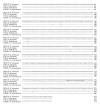A cotton-fiber-associated cyclin-dependent kinase a gene: characterization and chromosomal location
- PMID: 22745634
- PMCID: PMC3382222
- DOI: 10.1155/2012/613812
A cotton-fiber-associated cyclin-dependent kinase a gene: characterization and chromosomal location
Abstract
A cotton fiber cDNA and its genomic sequences encoding an A-type cyclin-dependent kinase (GhCDKA) were cloned and characterized. The encoded GhCDKA protein contains the conserved cyclin-binding, ATP binding, and catalytic domains. Northern blot and RT-PCR analysis revealed that the GhCDKA transcript was high in 5-10 DPA fibers, moderate in 15 and 20 DPA fibers and roots, and low in flowers and leaves. GhCDKA protein levels in fibers increased from 5-15 DPA, peaked at 15 DPA, and decreased from 15 t0 20 DPA. The differential expression of GhCDKA suggested that the gene might play an important role in fiber development. The GhCDKA sequence data was used to develop single nucleotide polymorphism (SNP) markers specific for the CDKA gene in cotton. A primer specific to one of the SNPs was used to locate the CDKA gene to chromosome 16 by deletion analysis using a series of hypoaneuploid interspecific hybrids.
Figures






References
-
- Van’t Hof J, Saha S. Cotton fibers can undergo cell division. American Journal of Botany. 1997;84(9):1231–1235. - PubMed
-
- Saha S, Van’t Hof J. Cotton fiber cells are arrested at G1 stage. Journal of New Seeds. 2005;7(1):1–8.
-
- Dewitte W, Murray JAH. The plant cell cycle. Annual Review of Plant Biology. 2003;54:235–264. - PubMed
-
- Inzé D, De Veylder L. Cell cycle regulation in plant development. Annual Review of Genetics. 2006;40:77–105. - PubMed
LinkOut - more resources
Full Text Sources

